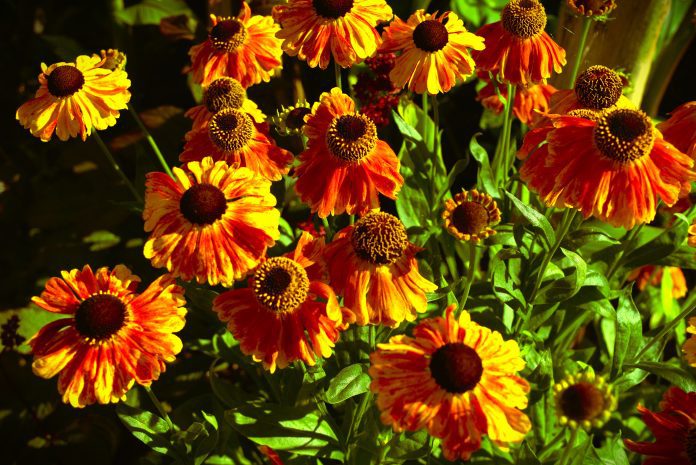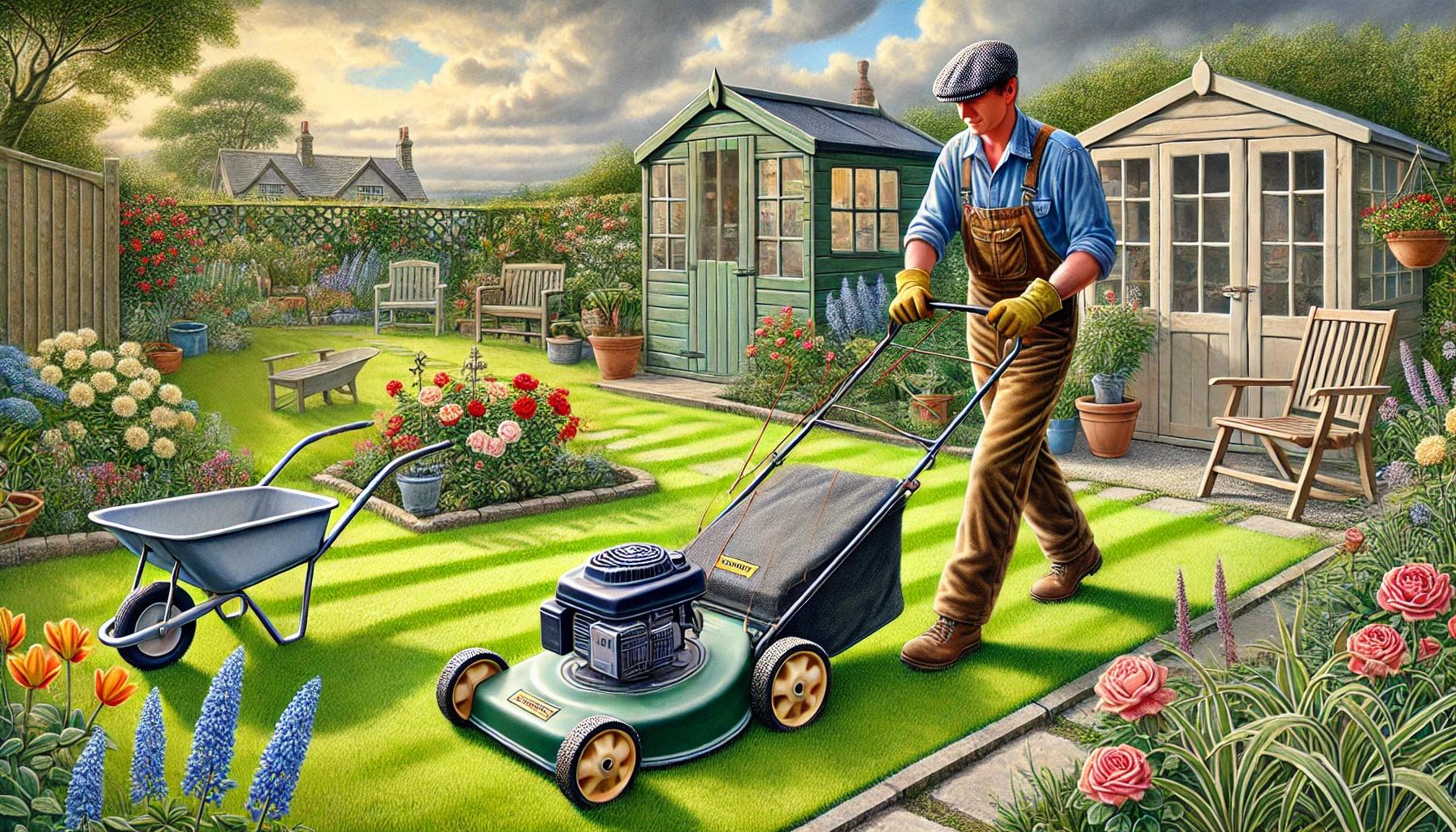Heleniums, commonly known as Sneezeweed, are vibrant, daisy-like perennials that bring bold late-season color to gardens. Known for their fiery hues of yellow, orange, red, and gold, Heleniums are perfect for brightening up borders from midsummer to fall. They attract pollinators like bees and butterflies, and despite their common name, they don’t cause sneezing! With proper care, Heleniums can provide years of color and joy in the garden. Here’s how to grow and care for them.
1. Choosing the Right Helenium Variety
Heleniums are available in many cultivars and hybrids, offering a range of colors, heights, and bloom shapes. Most varieties reach between 2-5 feet in height, making them suitable for mixed borders, cottage gardens, and prairie-style planting. Here are some of the best varieties to consider:
- Helenium ‘Moerheim Beauty’: A classic variety, this cultivar features rich copper-red flowers with dark centers. It grows to about 3-4 feet tall and is known for its long-lasting blooms.
- Helenium ‘Sahin’s Early Flowerer’: This variety is an excellent choice for early summer blooms, with flowers in shades of orange, red, and yellow. It grows up to 4 feet tall and flowers for an extended period.
- Helenium ‘Short ‘n’ Sassy’: A compact variety, growing to just 2 feet, with bright golden-orange blooms. Perfect for smaller gardens or container planting.
- Helenium ‘Autumn Lollipop’: A stunning mix of orange and yellow tones, this variety reaches about 3 feet in height and offers profuse blooms well into autumn.
- Helenium ‘Ruby Tuesday’: Featuring deep ruby-red flowers, this variety grows to around 2 feet tall, making it a standout in any border or container.
2. Ideal Growing Conditions for Heleniums
Heleniums are resilient and thrive in a variety of conditions, but to get the best blooms and plant health, consider the following growing preferences:
- Sunlight: Heleniums prefer full sun, so plant them in a spot that gets at least 6 hours of direct sunlight a day. While they can tolerate partial shade, their blooming potential may be reduced.
- Soil: These plants grow best in well-drained soil with a good amount of organic matter. While they can tolerate average garden soil, slightly moist, rich soil will help them thrive and bloom more profusely.
- Watering: Keep the soil consistently moist, especially during hot, dry weather. Heleniums are not drought-tolerant, and dry conditions can lead to reduced flowering and stunted growth. However, avoid waterlogging, as they don’t like soggy roots.
- Climate: Heleniums are hardy in USDA Zones 3-9, making them a versatile choice for a range of climates. They perform best in moderate climates with good rainfall.
3. Planting Heleniums
From Transplants or Divisions:
- Timing: Plant Heleniums in spring or early autumn, when the soil is warm but not too hot. This gives them time to establish strong roots before the growing season or winter dormancy.
- Spacing: Space plants about 12-24 inches apart, depending on the variety. Taller varieties need more space to spread, while dwarf varieties can be spaced closer together.
- Depth: When planting, dig a hole deep enough to accommodate the root ball, ensuring the crown is level with the soil surface. Water well after planting to help them establish.
From Seeds:
- Timing: Helenium seeds can be sown (January to April) indoors 8-10 weeks before the last frost or directly outdoors after the danger of frost has passed (June and July).
- Germination: Sow seeds on the surface of the soil and lightly press them in. Keep the soil moist, and germination should occur in 14-21 days.
4. Caring for Heleniums
- Fertilizing: Heleniums are moderate feeders. A balanced fertilizer or a layer of compost applied in spring will provide the nutrients they need. Over-fertilizing can lead to floppy plants, so it’s better to go light.
- Deadheading: Removing spent flowers will encourage more blooms and keep the plants looking tidy. If left to go to seed, Heleniums will self-seed, but deadheading helps extend the bloom period.
- Staking: Taller varieties may need staking, especially in windy conditions or when grown in richer soils that promote taller, leggier growth. Use bamboo stakes or other supports to keep the stems upright.
- Mulching: Apply a layer of organic mulch around the base of the plants to help retain moisture, regulate soil temperature, and suppress weeds.
- Cutting Back: After the flowers fade in the fall, cut the plants back to a few inches above the ground. This will help tidy up the garden and prepare the plants for winter dormancy.
5. Pest and Disease Management
Heleniums are generally robust and disease-resistant, but there are a few pests and issues to watch out for:
- Aphids: These small sap-sucking insects can appear on new growth. You can control aphids by washing them off with water or using insecticidal soap.
- Powdery Mildew: In humid conditions or poor air circulation, Heleniums can be susceptible to powdery mildew, which causes a white, powdery coating on leaves. To prevent this, ensure good air circulation and avoid overhead watering.
- Slugs and Snails: In moist conditions, slugs and snails may attack young plants or foliage. Use slug pellets, barriers, or hand-pick to keep them at bay.
6. Dividing and Propagating Heleniums
Heleniums can be propagated through division or seeds. Dividing plants every 2-3 years helps maintain their vigor and prevents overcrowding.
- Division: In early spring or fall, dig up the entire plant and carefully divide the root clump into smaller sections. Each division should have a few shoots and roots. Replant the divisions immediately and water well.
- Seeds: Collect seeds in the fall once the seed heads dry. Sow seeds indoors or outdoors in spring. However, be aware that Helenium hybrids may not come true from seed, so division is often a more reliable propagation method.
7. Companion Plants for Heleniums
Heleniums mix beautifully with other late-summer and fall-blooming perennials. Here are some ideal companions:
- Asters: The soft purples and blues of asters provide a lovely contrast to the fiery shades of Heleniums.
- Rudbeckia: Another late-season bloomer, Rudbeckia’s bright yellow blooms complement Heleniums, creating a vibrant fall garden display.
- Echinacea (Coneflower): Echinacea’s purple-pink flowers pair well with Heleniums in both color and form.
- Ornamental Grasses: Tall grasses like Miscanthus or Panicum add texture and movement to the garden and provide a striking backdrop for Helenium blooms.
Conclusion
Heleniums are a must-have for any garden that needs a burst of late-season color. With their bold, cheerful flowers, they brighten up borders, attract pollinators, and are easy to care for. By choosing the right variety and providing the appropriate growing conditions, Heleniums will thrive and provide stunning blooms year after year. Whether you’re looking for a compact variety for containers or a tall, show-stopping plant for the back of your border, Heleniums are a rewarding addition to any garden.




